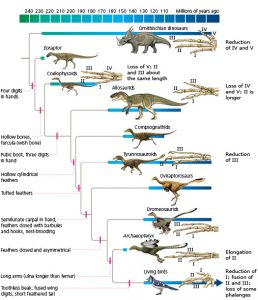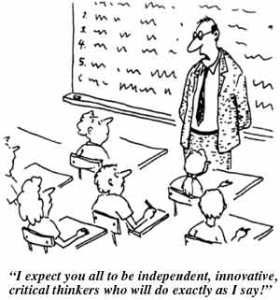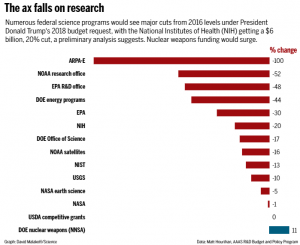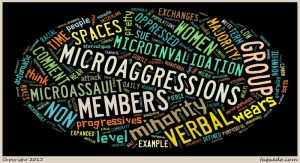Mar
28
2017
 Futurists have a love-hate relationship with artificial intelligence (AI). Elon Musk represents the fear side of this. In two recent articles we see two sides of this fear of AI. In a Vanity Fair piece we learn:
Futurists have a love-hate relationship with artificial intelligence (AI). Elon Musk represents the fear side of this. In two recent articles we see two sides of this fear of AI. In a Vanity Fair piece we learn:
He told Bloomberg’s Ashlee Vance, the author of the biography Elon Musk, that he was afraid that his friend Larry Page, a co-founder of Google and now the C.E.O. of its parent company, Alphabet, could have perfectly good intentions but still “produce something evil by accident”—including, possibly, “a fleet of artificial intelligence-enhanced robots capable of destroying mankind.”
We also learn from The Verge:
SpaceX and Tesla CEO Elon Musk is backing a brain-computer interface venture called Neuralink, according to The Wall Street Journal. The company, which is still in the earliest stages of existence and has no public presence whatsoever, is centered on creating devices that can be implanted in the human brain, with the eventual purpose of helping human beings merge with software and keep pace with advancements in artificial intelligence. These enhancements could improve memory or allow for more direct interfacing with computing devices.
So Musk thinks we need to enhance our own intelligence digitally in order to compete with the AI that we are also creating, so they don’t destroy us. Musk is joined by Bill Gates and Stephen Hawking raising the alarm bells about the dangers of AI.
On the other end of the spectrum are Ray Kurzweil, Mark Zuckerberg and Larry Page. They think AI will bring about the next revolution for humanity, and we have nothing to worry about.
So who is right?
Continue Reading »
Mar
27
2017
 The fossil evidence for the evolution of birds is currently one of the greatest evolutionary stories we have to tell. It is also a home run for the predictive value of evolutionary theory and is a devastating blow to any denial of common descent.
The fossil evidence for the evolution of birds is currently one of the greatest evolutionary stories we have to tell. It is also a home run for the predictive value of evolutionary theory and is a devastating blow to any denial of common descent.
Darwin published On the Origin of Species in 1859. At that time the fossil record was sparse, although it was enough to establish that the forms of living things was changing over geological time. One of the most dramatic gaps in the fossil record at the time was between birds and other vertebrates. It was believed that birds must have evolved from some type of reptile, but the most recent common ancestor was not known.
This was a great test for the new theory of evolution. If evolution were true then birds must have evolved from something else, and therefore the gap between birds and their closest non-avian relative should eventually be filled in by future fossil finds. If evolution is true, those creatures must have existed.
If, on the other hand, some version of creationism were true so that was created close to its current form, then there would not have to be any creatures filling in the morphological space between birds and their closest relatives. Birds would not have any relatives, they would be an isolated group unto themselves.
Continue Reading »
Mar
24
2017
 Here is a light and fun item for a Friday – we are making progress in the technology for 3D printing houses. Business Insider did a review of a San Francisco startup, Apis Cor, that says it built a 400 sq ft. house in 24 hours with $10,134 worth of materials. That is pretty impressive.
Here is a light and fun item for a Friday – we are making progress in the technology for 3D printing houses. Business Insider did a review of a San Francisco startup, Apis Cor, that says it built a 400 sq ft. house in 24 hours with $10,134 worth of materials. That is pretty impressive.
They estimate the cost of a square house built with their methods at around $223 per sq meter. A conventionally built home would be in the $1,200 per sq meter range (obviously this is highly variable, depending on quality, complexity, and finishing).
3D printed homes are not new. The idea is that you use a large 3D printer that makes the walls of the home using additive technology. They print with some version of concrete. There are limits on the size and the height of such constructions, and it has been costly and time-consuming to set up the printer on sight. One option is to 3D print sections of a house in a factory then deliver them and assemble on site. This adds time and expense.
Apis Cor’s advance is their 3D printer, which they claim is more portable and can easily and quickly be set up on site, to 3D print the home entirely as one piece. The video at the link above shows the process (but is almost comical in that it is a self-parody of a corporate promotional video).
Continue Reading »
Mar
23
2017
 One of the (perhaps) good things to come out of the recent political climate in the US is a broader appreciation for the need to teach critical thinking skills. I hope we can capitalize on this new awareness to make some longstanding changes to our culture.
One of the (perhaps) good things to come out of the recent political climate in the US is a broader appreciation for the need to teach critical thinking skills. I hope we can capitalize on this new awareness to make some longstanding changes to our culture.
For example, a recent NYT article is titled: “Why People Continue to Believe Objectively False Things,” and begins:
“Everyone is entitled to his own opinion, but not his own facts,” goes the saying — one that now seems like a relic of simpler times.
The article also discusses recent evidence showing that belief in the “birther” Obama conspiracy decreased after Trump admitted that Obama was born in Hawaii. Shortly after that admission 62% of people stated they believed Obama was a US citizen, but a more recent poll shows the number dropped to 57%. (Over that period of time fewer Republicans believed he was a US citizen, while more Democrats did.) The authors conclude that over time people forget specific information while they revert to old tribal beliefs.
A recent study looking at Twitter activity also reinforces the evidence that people generally follow their instincts rather than critical thinking. They showed that people will rate the believability of a tweet as higher, and are more likely to share that tweet, if it already has a high number of retweets. This creates a positive feedback loop in which retweets beget retweets, regardless of the inherent reliability of the information.
Continue Reading »
Mar
21
2017
 I was recently asked about the year 2038 problem as it relates to the Y2K bug. Specifically, it seemed like the Y2K bug was a non-event, so should we similarly not worry about the year 2038 problem.
I was recently asked about the year 2038 problem as it relates to the Y2K bug. Specifically, it seemed like the Y2K bug was a non-event, so should we similarly not worry about the year 2038 problem.
Lessons from Y2K
At this point some of you may not know what I am talking about, so first some history. When the modern computing age was being developed back in the 1950s memory was at a premium. For this reason dates were represented by six digits – MM/DD/YY. Just two digits were used for the year, assuming that all years had the prefix 19. So 01/01/80 was January 1st, 1980.
The first person to recognize this was a potential problem was Robert Bemer in 1958. Apparently he spend the next couple of decades trying to convince his fellow programmers this was a problem, but no one listened. Talk of the year 2000, or millennial bug (often shortened to Y2K bug) didn’t really spread until the 1980s, and no one took it seriously until the 1990s.
The potential problem is that once the date turned over to January 1st, 2000, computers would only record that as 01/01/00, and treat it as 1900. This might cause systems to crash, and by 2000 much of our society was controlled by computers, from banking to air traffic control. In the 1990s the Y2K bug went from a non-problem to a mild panic, with the most dire warnings talking of civilization collapse.
Continue Reading »
Mar
20
2017
 The American scientific community is in a bit of a panic over Trump’s first proposed budget. The budget calls for an 18% decrease ($5.8 billion) for the National Institutes of Health (NIH). There are deep cuts in energy research and Earth science as well.
The American scientific community is in a bit of a panic over Trump’s first proposed budget. The budget calls for an 18% decrease ($5.8 billion) for the National Institutes of Health (NIH). There are deep cuts in energy research and Earth science as well.
The reaction of the scientific community has been consistent – such cuts would be disastrous.
It probably comes as no surprise that science is expensive. This is despite the fact that scientists are generally paid very little, especially when compared to their years of training. Science is a career of passion. But maintaining a lab or conductive field research can be very expensive. Research often requires expensive equipment and materials, lab space, support staff, and lots of time.
Research is not just something that scientists do – it requires extensive infrastructure. That infrastructure needs to be maintained mostly with one-off grants. The vast majority of scientific research will not directly generate profits for the researchers, the lab, or the supporting institution. Keeping a lab going is like keeping plates spinning, the researchers are constantly applying for grants and weaving together the funding they need.
Continue Reading »
Mar
17
2017
 I have to say, from the first time I heard the term “microaggression” I didn’t like it. Something deeply bothered me about the concept, but I kept an open mind as I tried to understand how it was being defined and used.
I have to say, from the first time I heard the term “microaggression” I didn’t like it. Something deeply bothered me about the concept, but I kept an open mind as I tried to understand how it was being defined and used.
A recent article by Scott Lilienfield (who is a friend of mine and has written for SBM) put into technical terms much of my vague discomfort with the concept.
Here is how one article supportive of the concept defines microaggressions:
Microaggressions are the everyday verbal, nonverbal, and environmental slights, snubs, or insults, whether intentional or unintentional, which communicate hostile, derogatory, or negative messages to target persons based solely upon their marginalized group membership. In many cases, these hidden messages may invalidate the group identity or experiential reality of target persons, demean them on a personal or group level, communicate they are lesser human beings, suggest they do not belong with the majority group, threaten and intimidate, or relegate them to inferior status and treatment.
They give some specific examples:
• A White man or woman clutches their purse or checks their wallet as a Black or Latino man approaches or passes them. (Hidden message: You and your group are criminals.).
• A female physician wearing a stethoscope is mistaken as a nurse. (Hidden message: Women should occupy nurturing and not decision-making roles. Women are less capable than men).
• Two gay men hold hands in public and are told not to flaunt their sexuality. (Hidden message: Same-sex displays of affection are abnormal and offensive. Keep it private and to yourselves.)
Continue Reading »
Mar
16
2017
 Glyphosate, the active ingredient in Roundup, is the most popular herbicide used in the world. It has gained particular attention because several of the more commonly used GMOs are glyphosate tolerant, and therefore are intended to be used with the herbicide. Glyphosate is also manufactured by Monsanto (although it is off patent and there are generic versions available).
Glyphosate, the active ingredient in Roundup, is the most popular herbicide used in the world. It has gained particular attention because several of the more commonly used GMOs are glyphosate tolerant, and therefore are intended to be used with the herbicide. Glyphosate is also manufactured by Monsanto (although it is off patent and there are generic versions available).
The question of the safety of glyphosate is in the news again after the New York Times did an article about a recent court case against Monsanto and the documents revealed through discovery and made public by the judge. Unfortunately, in my opinion the NYTs article is poorly done, and reveals significant bias – anti biotech bias is nothing new for the NYTs or the author of this article, Danny Hakim.
Last year I wrote about another article that Hakim wrote in the NYTs about GMOs, concluding:
In my opinion Hakim’s article in the Times was a hack piece with a biased narrative that is nothing more than a rehash of tired anti-GMO tropes that have already been widely deconstructed. He is entering this conversation late, and isn’t up to speed.
There are essentially two questions raised by Hakim’s latest article. The first concerns the behavior of Monsanto. Hakim alleges that they ghostwrote scientific articles for academics and used political pressure to shut down EPA reviews of glyphosate’s safety. I would not assume this assessment is true, and certainly don’t trust Hakim’s journalism given his history. The academics in question deny the allegations, and Monsanto claims these e-mails are taken out of context. We have certainly seen that before.
Continue Reading »
Mar
14
2017
 Aflatoxin is a serious food contaminant that causes both acute and chronic illness in animals and humans. It was first discovered in 1960 when 100,000 turkeys in the UK died over the course of a few months. Their deaths were tracked to a nut-based feed that was contaminated with a newly discovered toxin, named aflatoxin.
Aflatoxin is a serious food contaminant that causes both acute and chronic illness in animals and humans. It was first discovered in 1960 when 100,000 turkeys in the UK died over the course of a few months. Their deaths were tracked to a nut-based feed that was contaminated with a newly discovered toxin, named aflatoxin.
Aflatoxin is a group of 20 toxins produced by a fungus, Aspergillus species. According to Food Safety Watch:
Aflatoxins may be present in a wide range of food commodities, particularly cereals, oilseeds, spices and tree nuts. Maize, groundnuts (peanuts), pistachios, brazils, chillies, black pepper, dried fruit and figs are all known to be high risk foods for aflatoxin contamination, but the toxins have also been detected in many other commodities. Milk, cheese and other dairy products are at risk of contamination by aflatoxin M. The highest levels are usually found in commodities from warmer regions of the world where there is a great deal of climatic variation.
Corn is perhaps the biggest source of aflatoxin contamination. It is estimated that 16 million tons of corn are disposed of each year due to aflatoxin contamination. The toxin is highly stable and can survive most types of food processing.
Acute toxicity can result in death when severe. Chronic toxicity is difficult to detect, and the most common effect is liver damage and increased risk for liver cancer.
Many techniques are used to minimize contamination, but even with these methods aflatoxin is a huge source of food waste and an important cause of human illness, especially in developing countries. Continue Reading »
Mar
13
2017
 In 2008 Thaler and Sunstein published their book, Nudge, advocating for a more nuanced approach to changing public behavior. Since then nudge theory has been quite popular but hasn’t created the revolution optimists had hoped.
In 2008 Thaler and Sunstein published their book, Nudge, advocating for a more nuanced approach to changing public behavior. Since then nudge theory has been quite popular but hasn’t created the revolution optimists had hoped.
Here is the core problem: people do not always act in their own best interest. Sometimes this affects only them, but often the negative impacts affect the people around them, their family, and even society as a whole. An obvious example is vaccinations.
There are many less-obvious examples, however. Poor health care decisions increase the cost of health care, which is a rapidly increasing burden on society. Poor financial decisions can leave people in debt, might cause them to default on those debts, and have an overall negative impact on the economy. We all share risks through insurance premiums and public costs.
And, we actually care about people. We are a social species and we do generally have empathy for others (unless they have been psychologically relegated to an out-group). It is also some people’s job to care about people.
Therefore, for various reasons, there are individuals and groups who care about changing other people’s behavior for their own good and for the good of society. This paternalism runs up against several obstacles.
Continue Reading »
 Futurists have a love-hate relationship with artificial intelligence (AI). Elon Musk represents the fear side of this. In two recent articles we see two sides of this fear of AI. In a Vanity Fair piece we learn:
Futurists have a love-hate relationship with artificial intelligence (AI). Elon Musk represents the fear side of this. In two recent articles we see two sides of this fear of AI. In a Vanity Fair piece we learn:
 The fossil evidence for the evolution of birds is currently one of the greatest evolutionary stories we have to tell. It is also a home run for the predictive value of evolutionary theory and is a devastating blow to any denial of common descent.
The fossil evidence for the evolution of birds is currently one of the greatest evolutionary stories we have to tell. It is also a home run for the predictive value of evolutionary theory and is a devastating blow to any denial of common descent. Here is a light and fun item for a Friday – we are making progress in the technology for 3D printing houses.
Here is a light and fun item for a Friday – we are making progress in the technology for 3D printing houses.  One of the (perhaps) good things to come out of the recent political climate in the US is a broader appreciation for the need to teach critical thinking skills. I hope we can capitalize on this new awareness to make some longstanding changes to our culture.
One of the (perhaps) good things to come out of the recent political climate in the US is a broader appreciation for the need to teach critical thinking skills. I hope we can capitalize on this new awareness to make some longstanding changes to our culture. I was recently asked about the year 2038 problem as it relates to the Y2K bug. Specifically, it seemed like the Y2K bug was a non-event, so should we similarly not worry about the year 2038 problem.
I was recently asked about the year 2038 problem as it relates to the Y2K bug. Specifically, it seemed like the Y2K bug was a non-event, so should we similarly not worry about the year 2038 problem. The American scientific community is in a bit of a panic over
The American scientific community is in a bit of a panic over  I have to say, from the first time I heard the term “microaggression” I didn’t like it. Something deeply bothered me about the concept, but I kept an open mind as I tried to understand how it was being defined and used.
I have to say, from the first time I heard the term “microaggression” I didn’t like it. Something deeply bothered me about the concept, but I kept an open mind as I tried to understand how it was being defined and used. Glyphosate, the active ingredient in Roundup, is the most popular herbicide used in the world. It has gained particular attention because several of the more commonly used GMOs are glyphosate tolerant, and therefore are intended to be used with the herbicide. Glyphosate is also manufactured by Monsanto (although it is off patent and there are generic versions available).
Glyphosate, the active ingredient in Roundup, is the most popular herbicide used in the world. It has gained particular attention because several of the more commonly used GMOs are glyphosate tolerant, and therefore are intended to be used with the herbicide. Glyphosate is also manufactured by Monsanto (although it is off patent and there are generic versions available). Aflatoxin is a serious food contaminant that causes both acute and chronic illness in animals and humans.
Aflatoxin is a serious food contaminant that causes both acute and chronic illness in animals and humans.  In 2008 Thaler and Sunstein published their book,
In 2008 Thaler and Sunstein published their book, 




